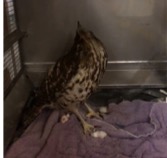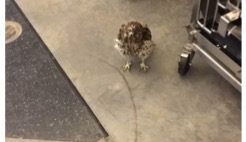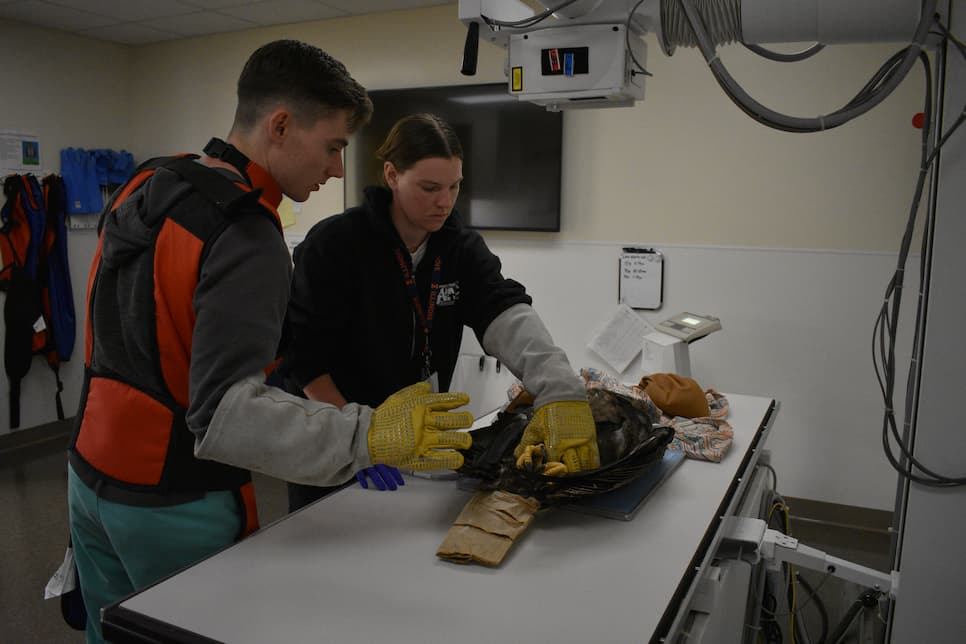Student blog by: Dana Clark (Class of 2019, volunteer team leader)
Presentation: A red-shouldered hawk presented to the Wildlife Medical Clinic on February 11, 2018. On physical exam, the patient was initially dull, but perked up with continued handling. Star-gazing was seen, as well as an inability to stand. The patient was appropriately conditioned (no signs of nutritional deficiency). No other abnormalities were found on physical exam, other than wet feathers. When the patient was placed in a cage, it became dorsally recumbent (laid on its back) and was either unable or unwilling to right itself.

Plan: Due to the possibility that this patient may have head trauma, an intravenous catheter was placed and mannitol (an osmotic diuretic) was given to reduce brain swelling. The patient was placed on IV fluids to maintain hydration, as well as Simbadol (buprenorphine) for analgesia (pain relief) and Meloxicam (NSAID) to reduce inflammation. Blood glucose was normal, and lead was not present in this patient’s blood. The patient received a second dose of mannitol the following morning and appeared to have normal mentation the following night.

Within two days, neurologic signs were reappearing. Initially, the patient was seen transiently star-gazing, as indicated in the first image. Throughout the week, this star-gazing worsened, and the hawk occasionally failed to correct his posture unless fully captured/flight tested (as demonstrated in the second image). Despite this star-gazing, the patient was very alert and appropriately aggressive. His appetite was voracious, although tong feeding was necessary since the patient was incapable of self feeding.
No abnormalities were found on radiographs or serum chemistry, so skeletal and metabolic disease was ruled out. A complete blood count showed an eosinophilia, indicating parasitism, and reactive lymphocytes, indicating that the bird’s immune system is being stimulated. However, since the remainder of the white blood cell count was normal, an infection seemed less likely.
Due to the eosinophilia and no further disease process signs beyond star-gazing, we suspect that neural larval migrans may be the culprit. A parasite particularly known to cause this is Baylisascaris procyonis, or raccoon roundworm. Such a condition is untreatable beyond supportive care. Since this patient’s signs failed to resolve with anti-inflammatory medication, supportive care, or time, it was decided that euthanasia would be the best option for this bird. Prior to euthanasia, a sample of cerebral spinal fluid (CSF) was taken to store and potentially test for abnormalities in the future. The patient was humanely euthanized, and we are awaiting full necropsy results.


